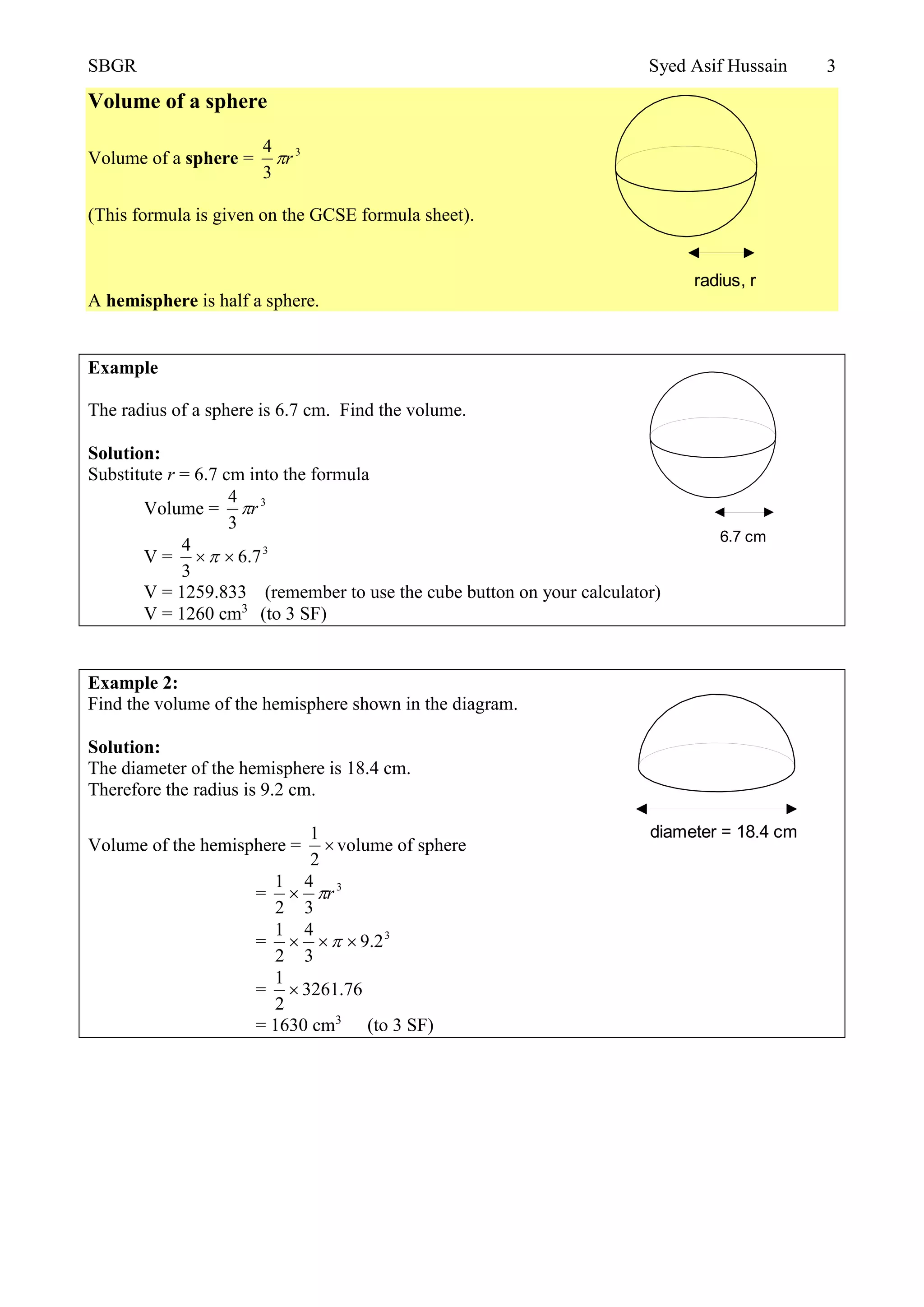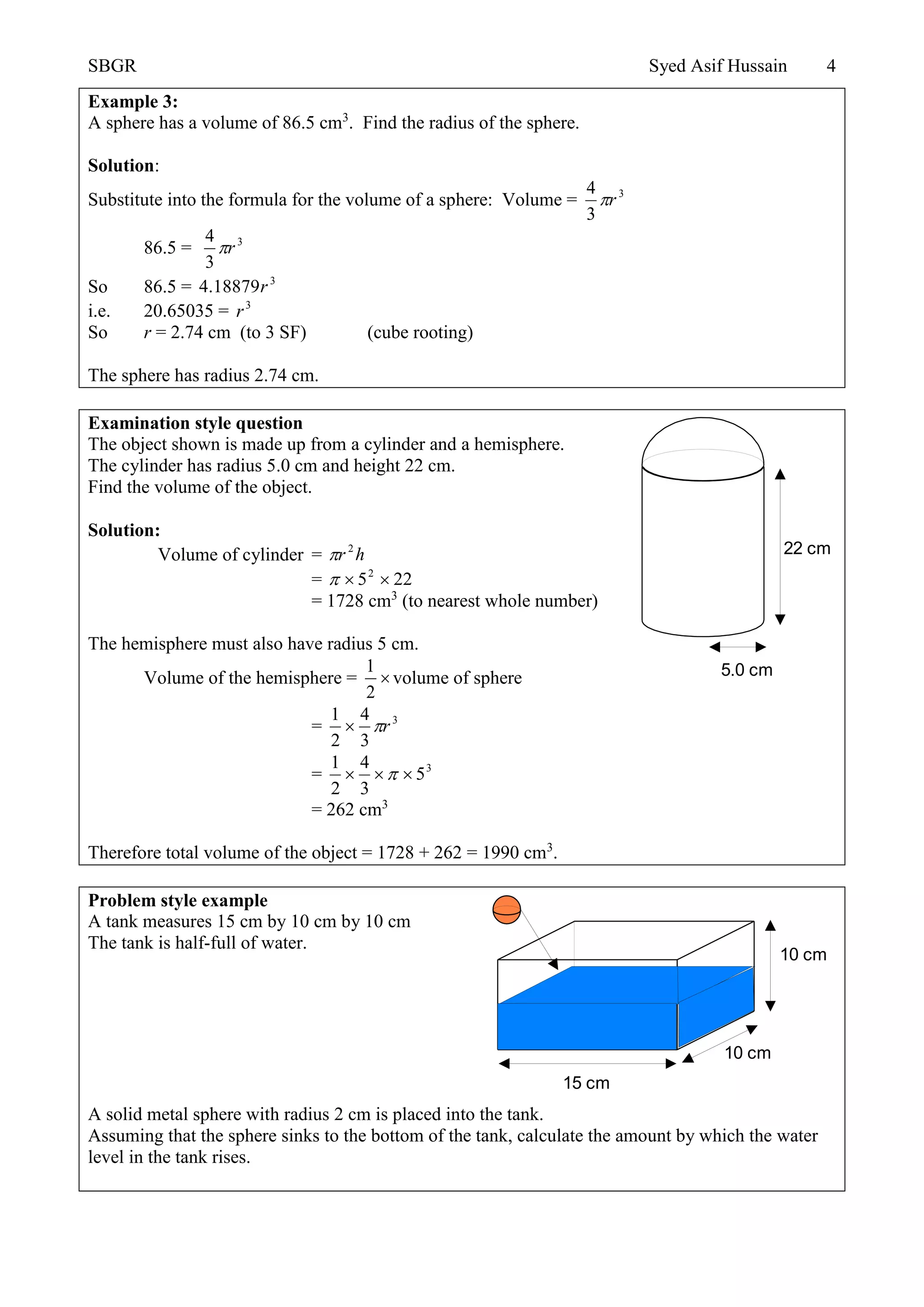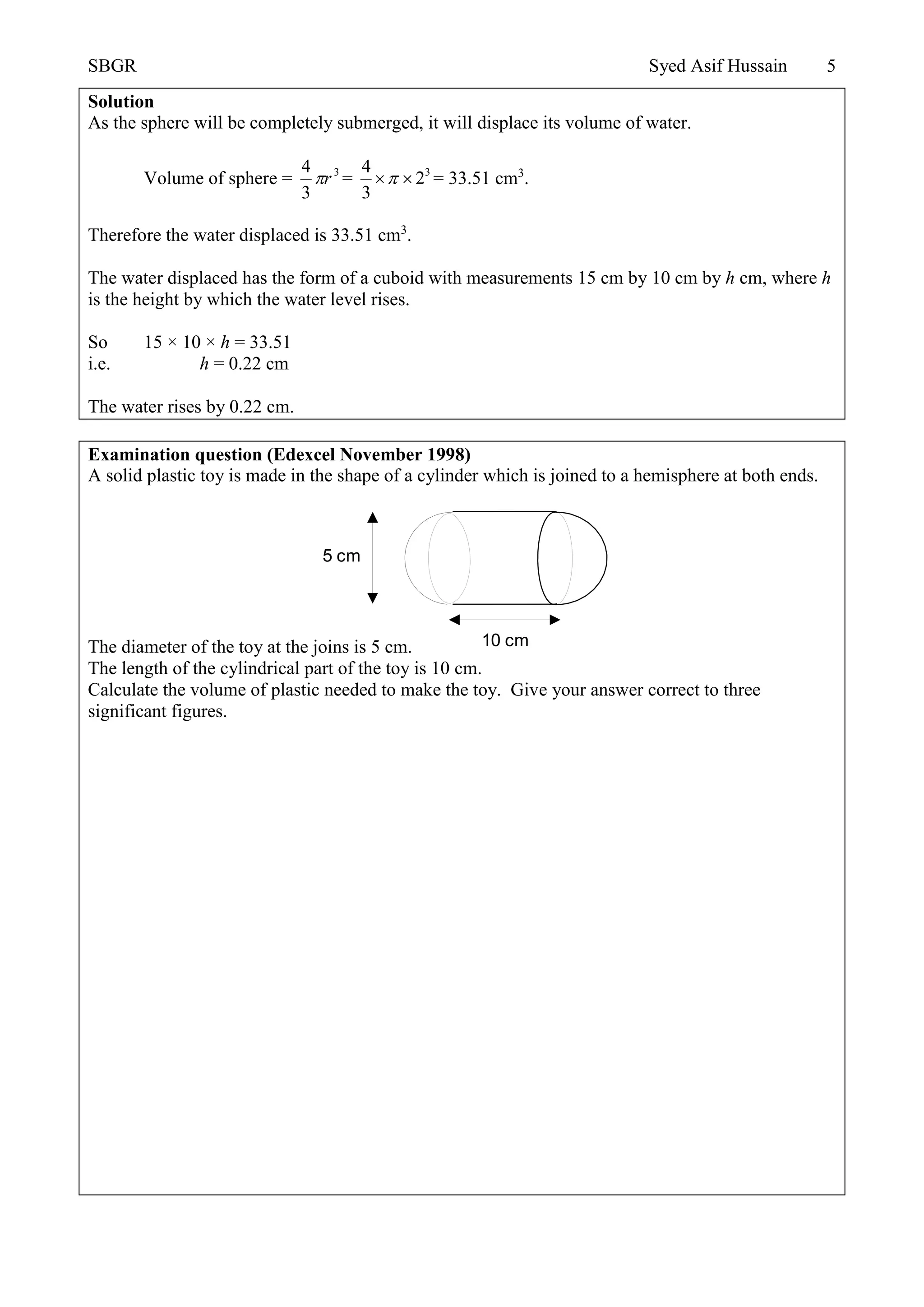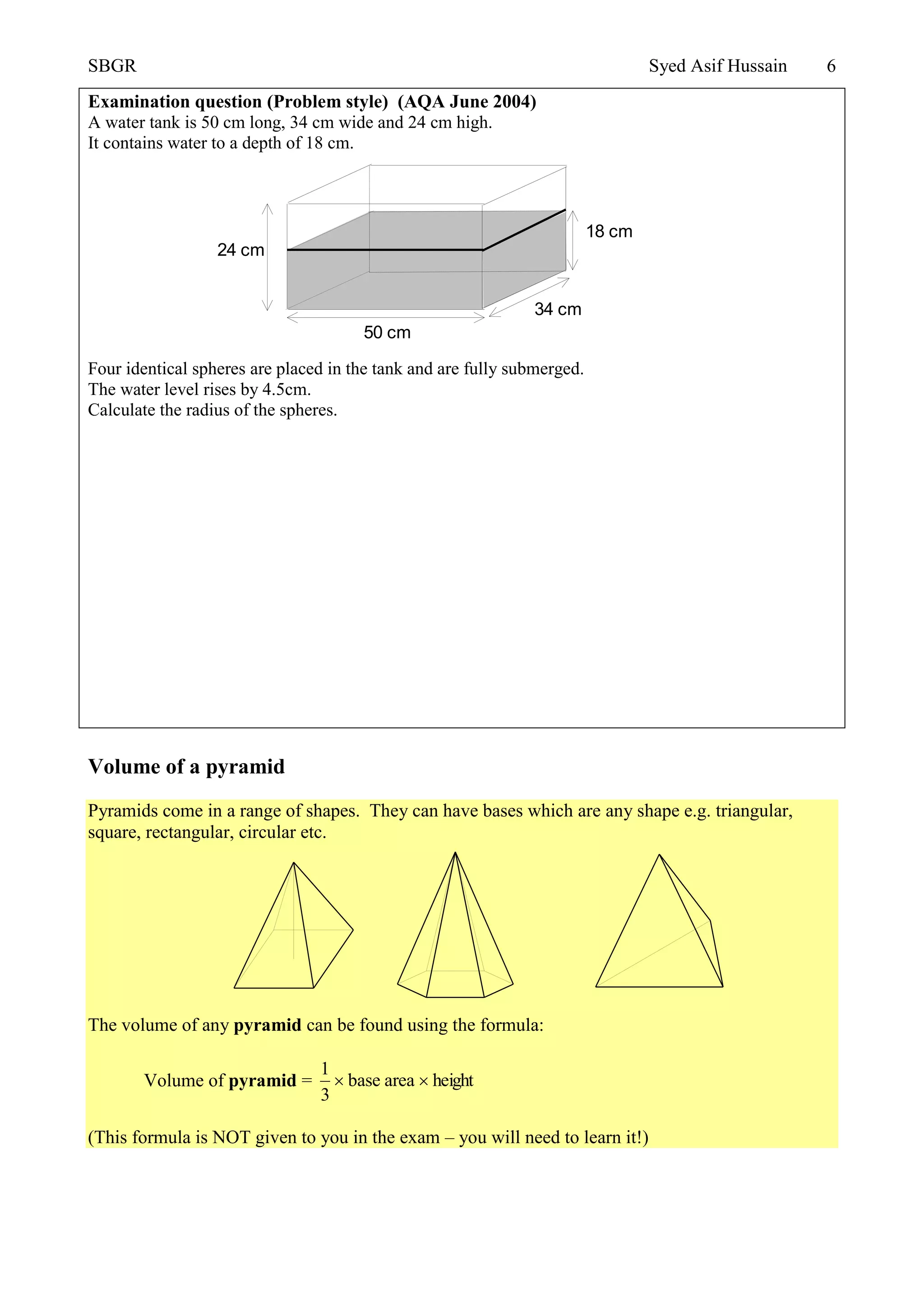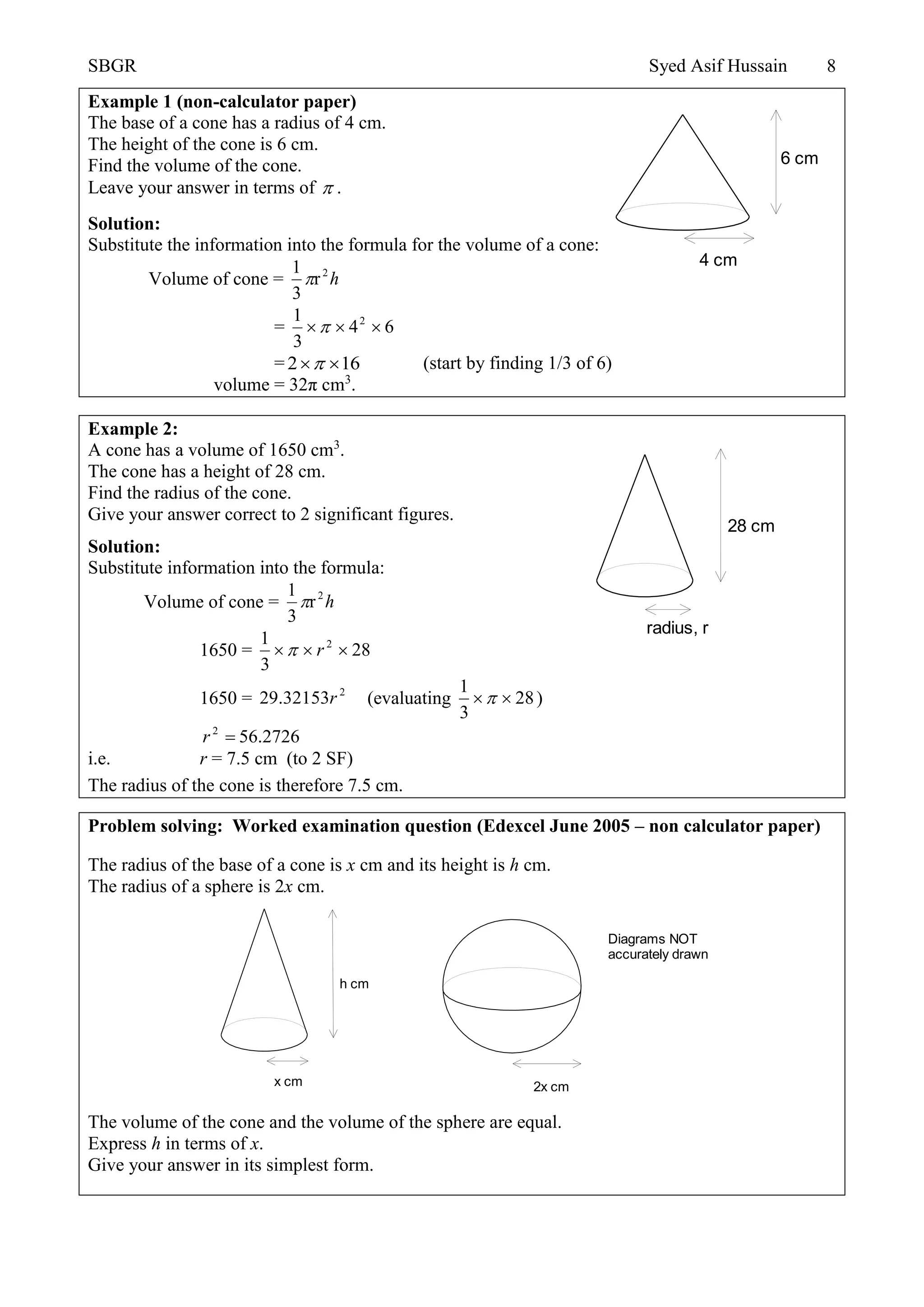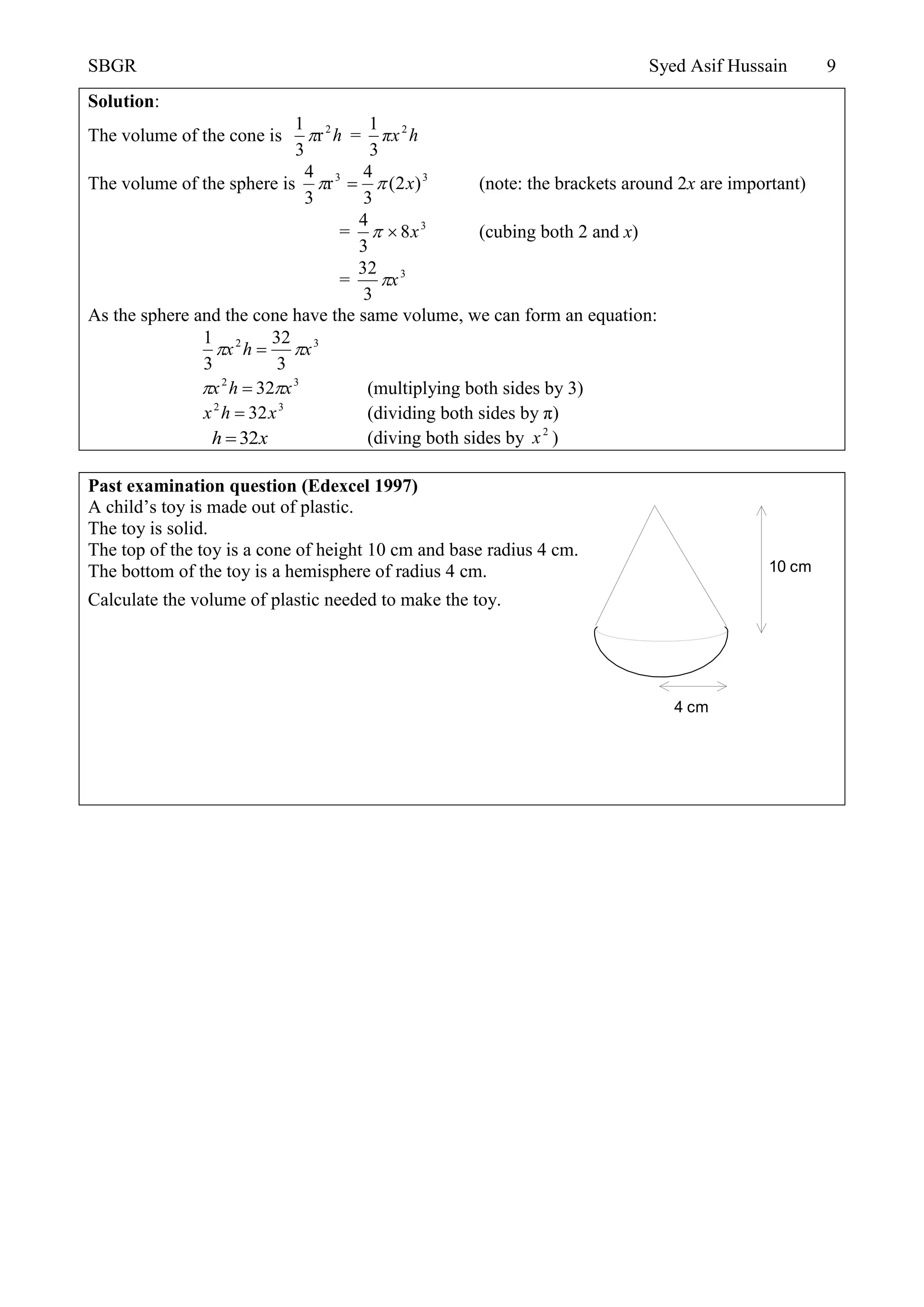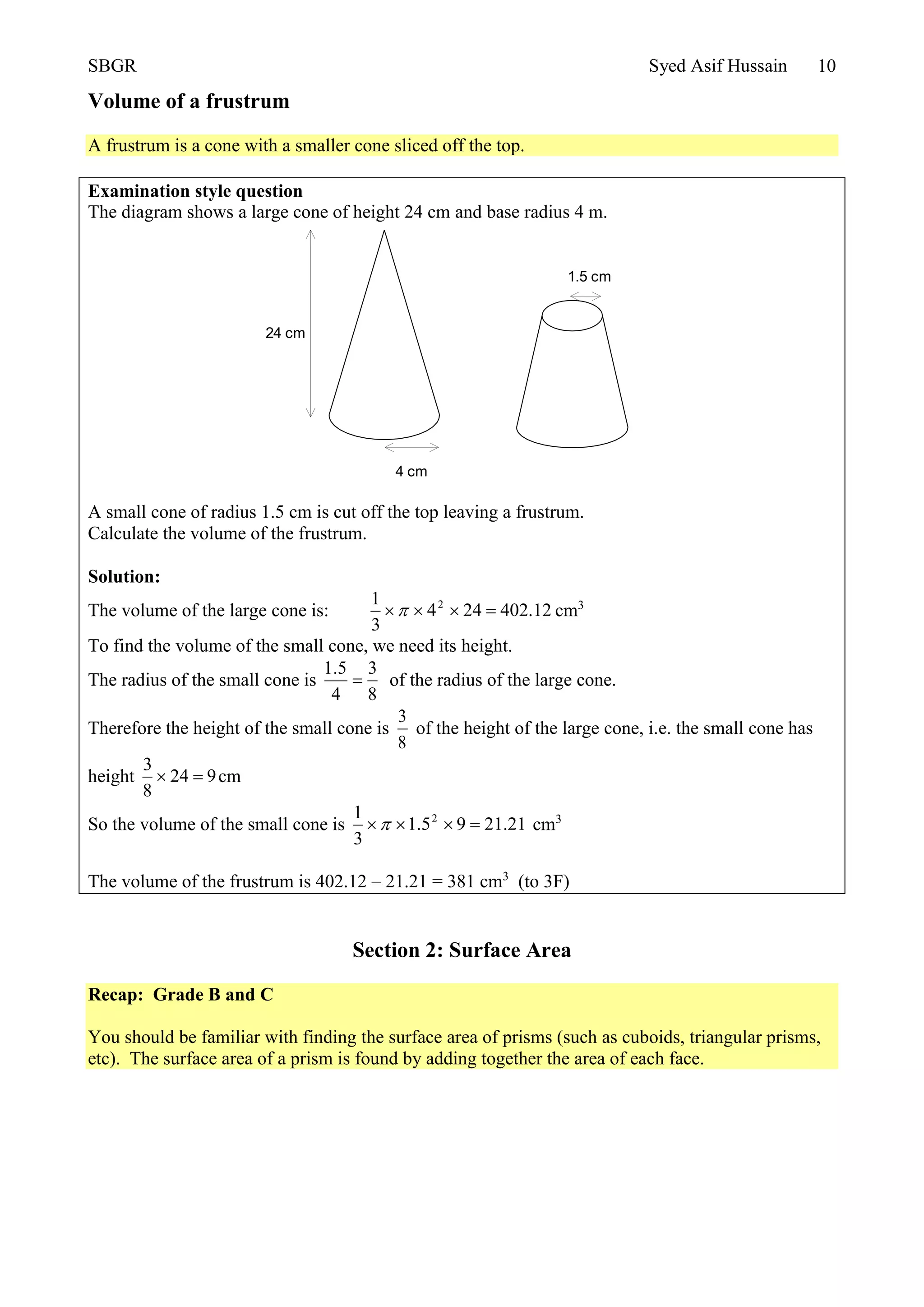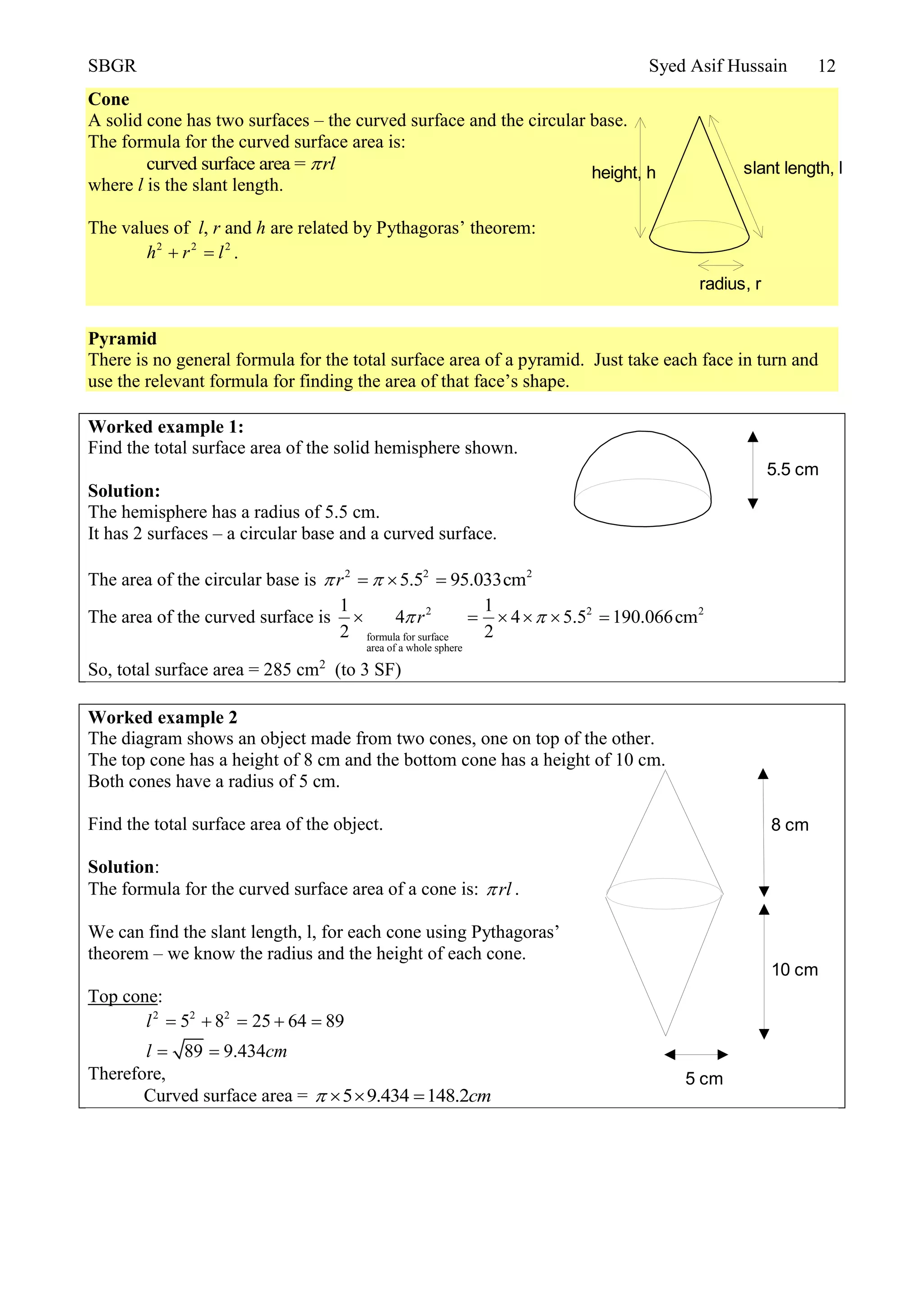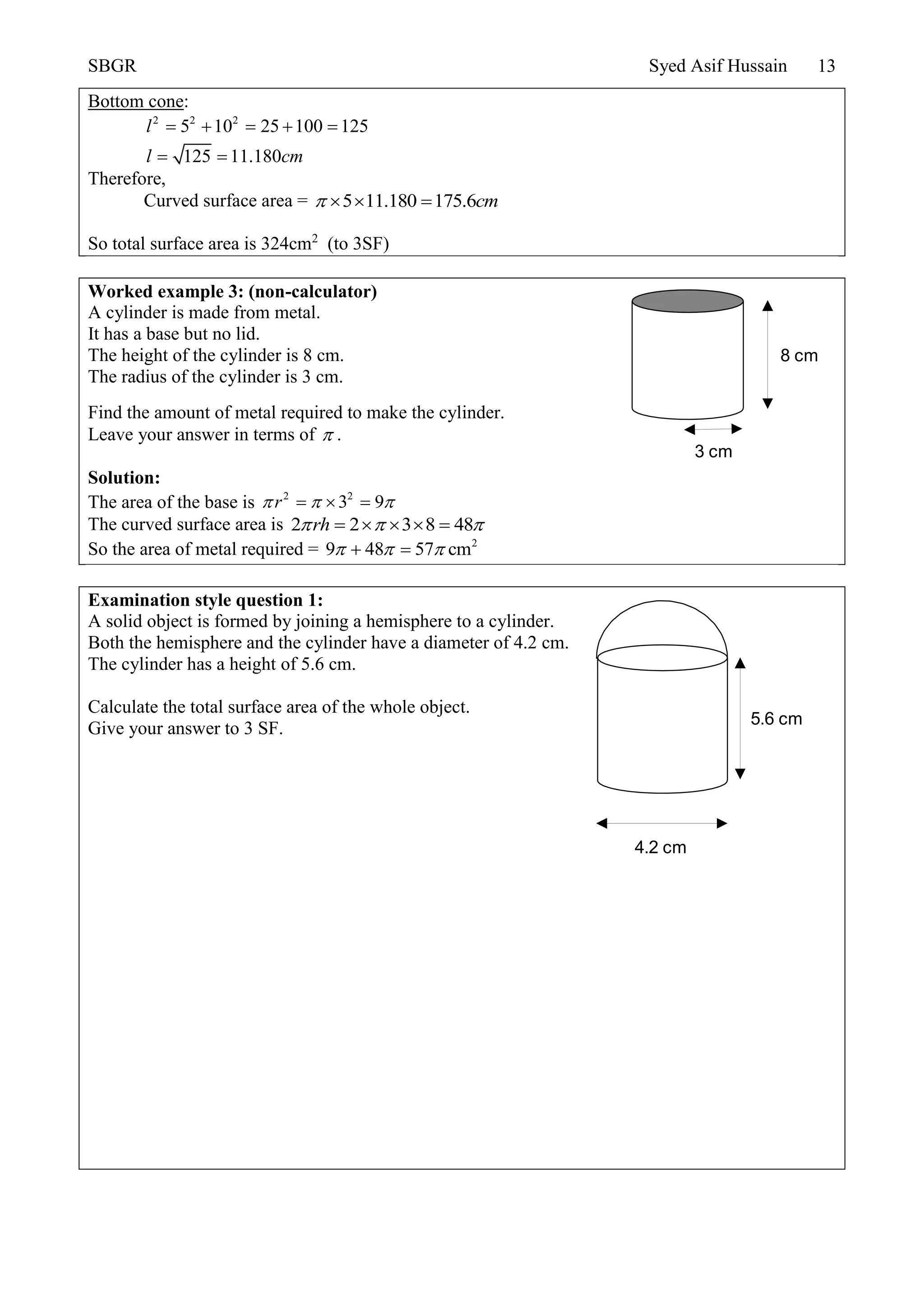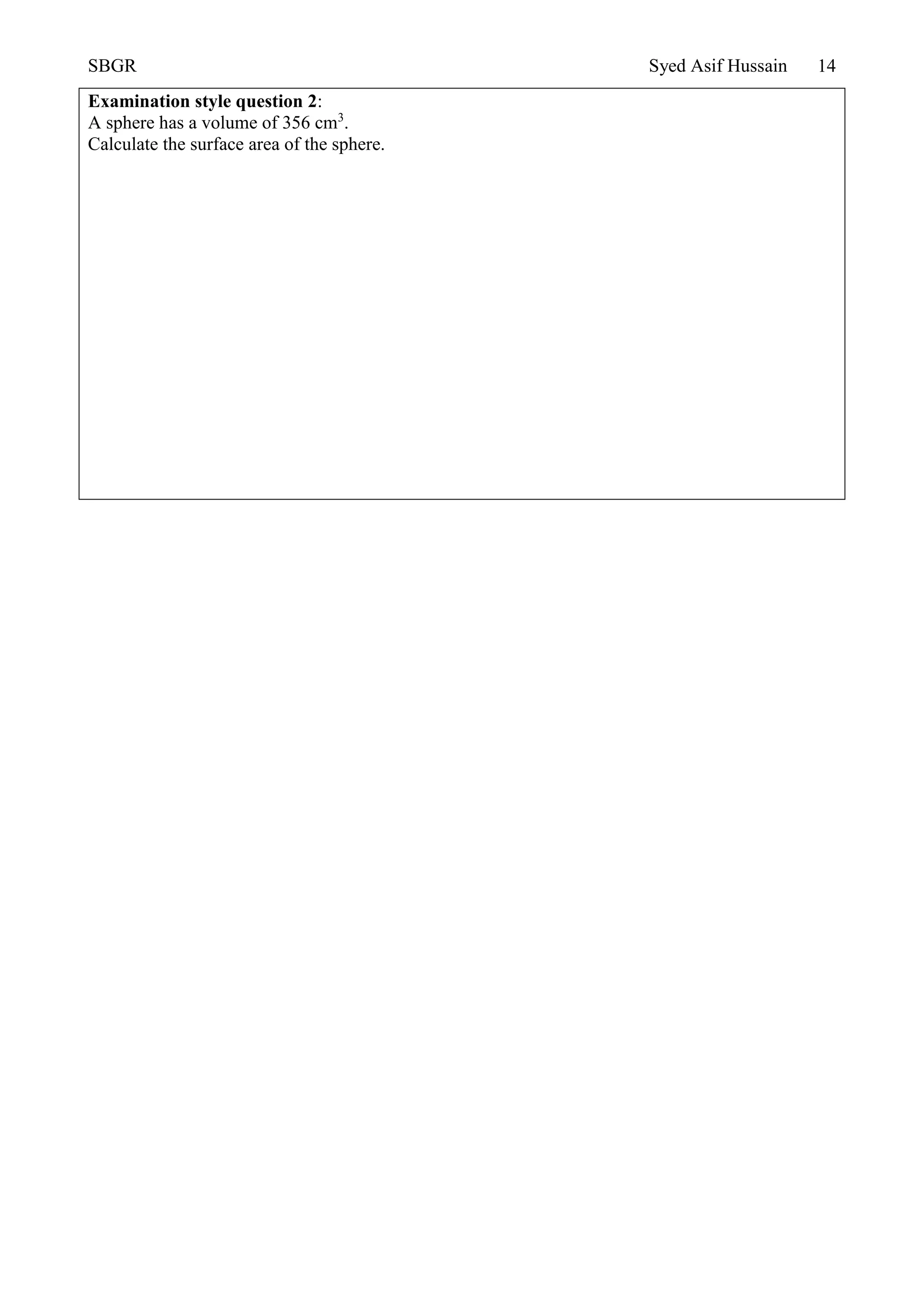The document discusses volume and surface area formulas for various shapes including spheres, cones, pyramids, cylinders. It provides examples of calculating volumes and surface areas using the appropriate formulas. Formulas covered include volume of a sphere, cone, cylinder, pyramid as well as surface area of a sphere, cylinder, cone, and total surface area of composite shapes. Worked examples demonstrate applying the formulas to solve word problems involving various shapes.


